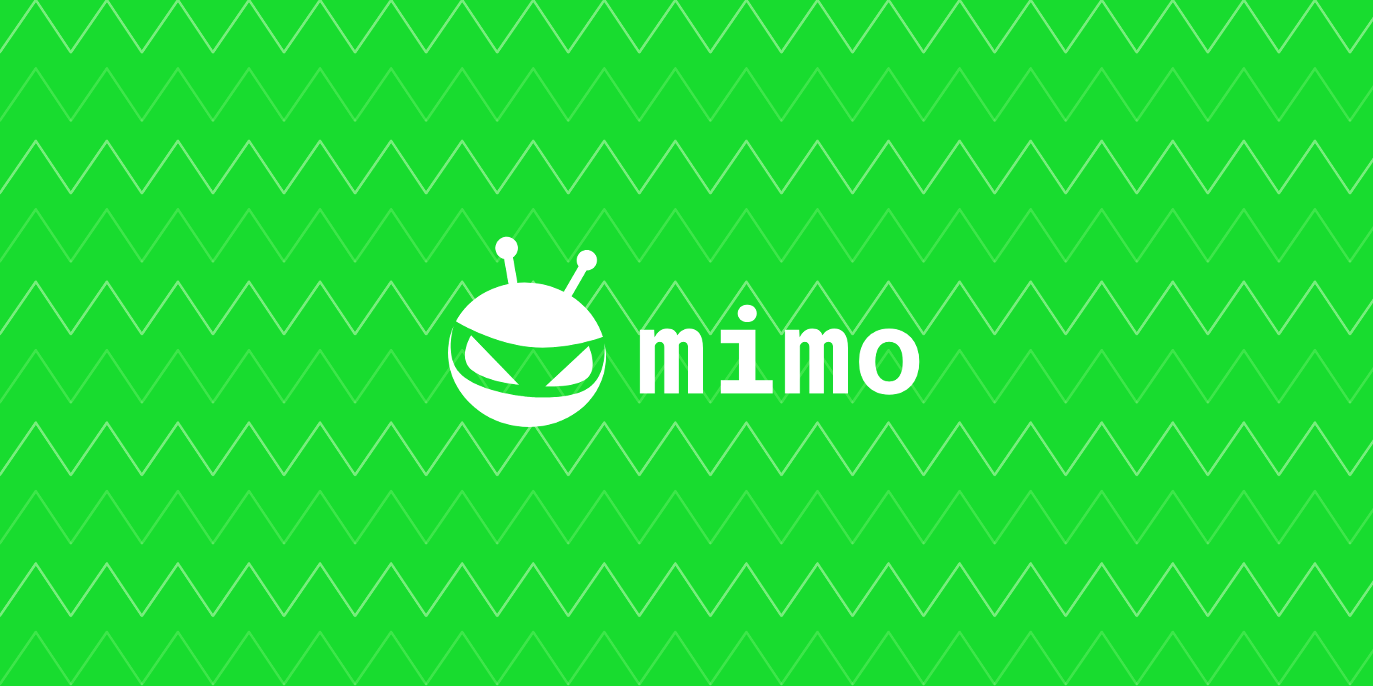Introducing mimo: Faster, Lower Cost, Cross-Chain DEX

Official mimo website: https://mimo.finance
Today we are proud to introduce mimo, a new cross-chain decentralized exchange (DEX) developed by CapitalMu, a fintech organization consisting of engineers, practitioners, and researchers from the National University of Singapore (NUS). Our vision for mimo is to empower innovative decentralized finance (DeFi) applications on IoTeX, which is the perfect blockchain for DeFi due to its speed (5-sec blocks with instant finality), low fees (almost-zero gas fees), and cross-chain flexibility (support of IoTeX & Ethereum assets).
This initial release of the mimo DEX focuses on peer-to-peer trading and community-managed liquidity pools. Compared to other DEXs, mimo is faster, cheaper, and more efficient thanks to CapitalMu’s research-backed automated liquidity protocol that synchronizes perfectly with the features of the IoTeX blockchain. Traders, arbitrageurs, and liquidity providers will enjoy fully decentralized trading with 5-second trade finality and almost-zero gas fees – no other DEX comes close!
Our long-term vision for mimo is to create an ecosystem of #DeFIoT products/services, which will be anchored to mimo’s automated liquidity protocol. In addition to the trading of cross-chain digital assets (e.g., IOTX/ETH) that is now available, mimo will be expanded to enable the tokenization and trading of IoT datasets/devices, asset-backed derivative products and more. As the canvas for unprecedented #DeFIoT business models, mimo will help to unlock the trillion-dollar IoT data market.
We are proud to launch mimo with the support of the IoTeX Foundation and welcome everyone to explore mimo and enjoy its unique benefits – we welcome any feedback to make mimo even better! In the rest of this blog, we explain the history of DEXs and how mimo is redefining the DEX landscape.
Demystifying Decentralized Exchanges
Decentralized exchanges (DEXs) emerged in 2014 as an alternative to centralized exchanges after the implosion of Mt. Gox, which handled ~70% of BTC transaction volume at its peak. Between 2011 and 2013, through a combination of thievery and fat fingering, 400,000 Bitcoin (about $450 million at the time) went missing. Mt. Gox’s irresponsibility morphed into full-fledged insolvency in early 2014 after numerous requests to withdraw Bitcoin went unanswered. As a result the market hemorrhaged, and confidence across the entire cryptocurrency industry was severely impacted.
Today, mainstream centralized exchanges operate with the utmost attention to their users’ funds and have secured insurance and introduced safeguards that Mt. Gox never did. However, it’s ironic that trustless and secure digital assets continue to trade mainly on centralized platforms that themselves lack transparency. This “centralized stewardship” model pales in comparison to the safety, transparency, and consistency of decentralized exchanges.
Decentralized exchanges execute trades with an auditable smart contract, allowing users to hold on to their digital assets until the time comes to trade. This is in contrast to the centralized model, which requires users to send their digital assets to a centralized exchange before issuing an IOU balance they can trade against.
Decentralized exchanges have come a long way since they were first introduced. Etherdelta rose to prominence after its founding in 2016 because it quickly listed ERC20 tokens that dominated the ICO era of 2017 and early 2018. Etherdelta copied much of the interface of centralized exchanges but did so by introducing inefficiencies into the mechanics of trading. Etherdelta’s primary hassle is waiting for Ethereum blockchain confirmations whenever one goes to execute a market order or sets or withdraws a limit order. This time delay is a nuisance for everyone, but it introduces an unthinkable bottleneck for algorithmic traders reliant on the instant settlement offered by centralized exchanges.
IDEX came to prominence in 2018 as a hybrid exchange. IDEX maintains two databases, taking orders centrally and then submitting them to the Ethereum blockchain for execution. This eliminates the problem of “front running” that is prevalent on Etherdelta, where traders pay high gas fees to have their trades jump ahead of trades that were posted earlier. However, IDEX’s centralized database defeats much of the purpose of decentralized exchanges in the first place.
Uniswap: A New DEX Dawn
Building on the concept of Etherdelta and IDEX, Uniswap was introduced in early 2018 and quietly ushered in a new paradigm for decentralized exchanges that currently facilitates hundreds of millions of USD-equivalent daily transaction volume. An impressive amount, but only a tiny fraction of the tens of billions of daily US dollar digital asset volume sloshing through centralized exchanges (much of which is cross-chain).
Uniswap eliminates the traditional order book that lists buy/sell offers in ascending and descending order and replaces it with a single liquidity pool that automatically incentivizes market-making. Traders can trade against a single price instead of a clunky order book and everyone can become a market maker. Market making consists of posting both sides of a given trading pair, and the pro-rata share of the trading fees are issued automatically. On centralized exchanges, professionals with in-depth technical experience dominate market-making, running automated logic against exchange APIs. Uniswap democratized market-making, putting anyone with digital assets on a level playing field.
mimo Goes Beyond Uniswap
Just as Uniswap built upon the learnings of Etherdelta and IDEX, mimo adopts the same philosophy as Uniswap but adds unique benefits that greatly expand the usability and capabilities of DEXs: cross-chain, lightning-fast execution, and low fees. We detail each benefit below.
Cross-Chain
Unlike Uniswap and other DEXs that only support assets from one blockchain, mimo supports assets from multiple blockchains to facilitate cross-chain asset swaps. ioTube, a cross-chain bridge developed by IoTeX, underlies the cross-chain capabilities of mimo. For liquidity providers, mimo offers a return for anyone who deposits digital asset pairs (e.g., IOTX/ETH, IOTX/VITA) to liquidity pools. mimo currently supports both ERC20 & XRC20 assets and we plan to support new assets from more blockchains in the future.
Lightning-fast Execution
Users of mimo are lavished with the benefit of the IoTeX blockchain’s 5-second blocks with instant finality and extremely high tolerance for transaction volumes. Stuck or missed trades due to a clogged blockchain are far less likely to happen on mimo. On the other hand, Uniswap and other Ethereum-based DEXs are now suffering from Ethereum bottlenecks in high transaction periods, causing some traders to miss trades or give up entirely. Never miss another trade opportunity and have peace of mind knowing your trades are finalized within 5 seconds with mimo!
Low Fees
It’s no secret that Ethereum fees have skyrocketed to the point where sending a simple transfer can cost upwards of $20 in gas fees. This has wreaked havoc on DEXs, introducing a massive barrier to entry and disqualifying retail traders that cannot stomach these unreasonable fees. In other words, only “whales” that trade massive volumes per day can afford to utilize Ethereum-based DEXs. With mimo, any trader with any amount of cryptocurrency can seek refuge on mimo to enjoy gas fees that currently do not surpass a few cents.
What’s Next for mimo?
Now that we understand the individual benefits of mimo, what are the bigger-picture collective benefits? Cross-chain, lightning-fast transactions, and low fees actually unlock unique features and improve user experience in more than just the obvious ways. Arbitrageurs, or those that simultaneously trade assets offered at different prices on different exchanges to earn a profit, are much more efficient on mimo given the speed of transactions and very low fees. If crypto markets experience a period of rapid volatility, say where prices drop by 20% in a single hour, the prices on a non-mimo DEX where transactions take several minutes could result in a severe price divergence. With mimo, the potential for a price divergence is much lower, since arbitrageurs can step in and close the gap in mere seconds.
But mimo’s potential is not limited to digital asset trading. The proliferation of IoT will lead to an onslaught of device data whose value can be unlocked without sacrificing privacy. We envision mimo to be the foundation for buying and selling this valuable IoT data – the new primary input into the decentralized economy. We look forward to working alongside the IoTeX Foundation to make #DeFIoT a reality, and we are so excited to have you along for the ride.
Twitter: https://twitter.com/mimoprotocol
Telegram: https://t.me/mimogroup
Blog: https://mimo.exchange/blog/author/mimo-2/
Email: [email protected]
